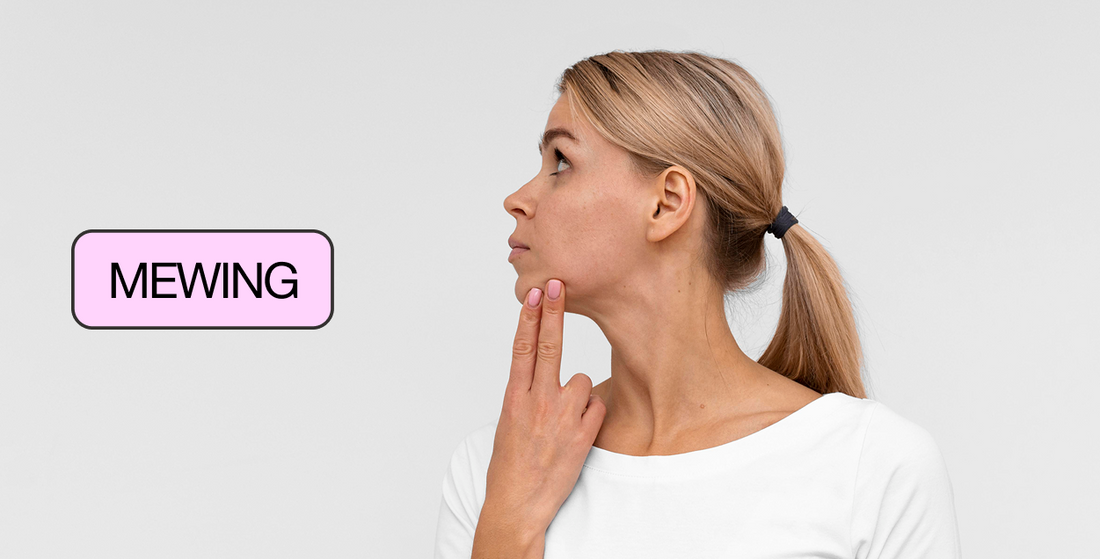Mewing is a technique where the tongue is placed against the palate, encouraging nasal breathing. This increases oxygen levels in the blood and boosts nitric oxide (NO), which supports vascular health.
Everything starts in childhood. If you observe how a baby nurses, you’ll see how we’re meant to eat and hold our tongue naturally. However, modern habits have disrupted this, introducing:
- Pacifiers
- Pureed foods from as early as 4 months, when the gut isn’t ready
- Bottle-feeding instead of natural nursing
How many of you were breastfed until at least age 2 and encouraged to chew solid food when your first teeth came in at 6–8 months, rather than being fed purees?
Why Does This Matter for Mewing?
Mewing helps restore these natural patterns. It encourages correct breathing, expands the jaw, prevents bite misalignment (especially in kids), supports blood pressure regulation, strengthens immunity, improves digestion, enhances posture, and yes – as a bonus, it can soften nasolabial folds, refine the jawline, relax tense chewing muscles, and more.
How to Do Mewing Correctly
Mewing involves placing your tongue against the roof of your mouth, just behind your upper front teeth. With each swallow or chew, the tongue gently pushes the upper jaw forward and upward. This helps expand the maxillary bones, relaxes the mid-palate suture, and enhances the structure of the cheekbones and under-eye area. Since the lower jaw follows the upper, this naturally supports facial muscle tone and contributes to a defined jawline.
By practicing mewing regularly, you train proper swallowing first as a habit (1-3 months), then as a conditioned reflex (3-9 months), and finally as an automatic reflex (9-12 months). Over time, it becomes effortless.
To accelerate progress, the course also includes posture training, jaw relaxation, and tongue exercises to release tension in the palate. A holistic approach delivers visible results faster.
How Often Should You Practice Mewing?
For the first 3 weeks (21 days), practice daily. This helps establish a new norm in the body, as any retraining requires repetition.
It’s also crucial to keep your tongue pressed against the hard palate behind the front teeth and remain mindful of your posture.
After 7-12 months and beyond, practice twice a week for maintenance.
What Results Can You Expect?
From an aesthetic perspective, expect more defined cheekbones, softened nasolabial folds, and balanced jaw muscles, which support the face’s structure and youthful contours.
You may notice lifted eye corners, a relaxed platysma (neck muscle), reduced facial puffiness, and improved posture.
Over time, nasal breathing becomes effortless, which can help with sleep quality and even eliminate snoring.




